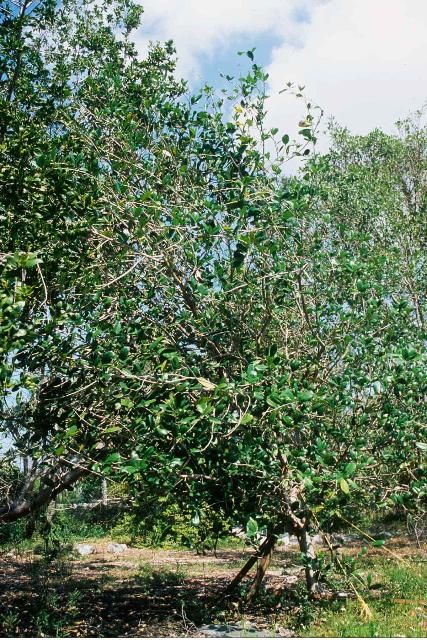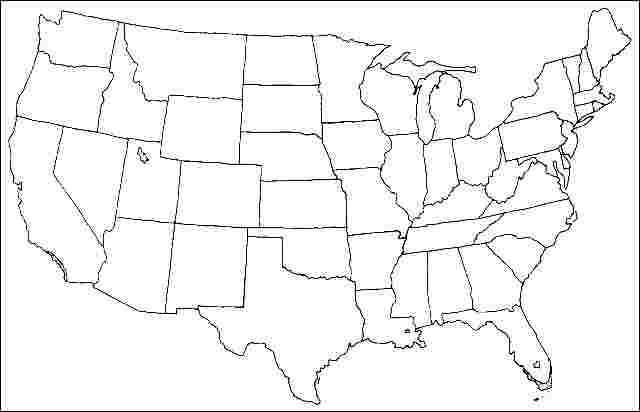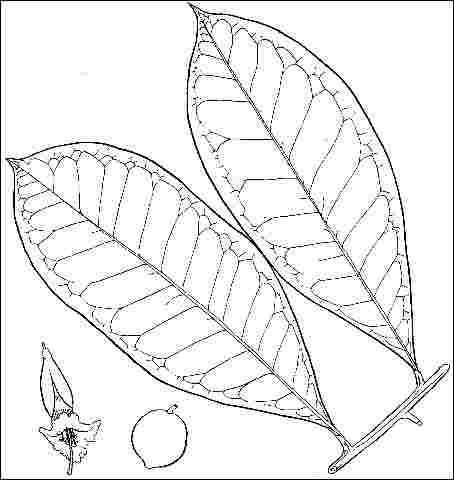Amphitecna latifolia: Black Calabash1
Introduction
This upright, densely foliated, evergreen small tree can reach a height of 30 feet with a variable spread. The large, seven-inch-long, dark green, glossy leaves make it ideal for a small-scale shade or specimen tree, or it can be allowed to grow into a tall screen. Throughout the year, two-inch-long, purplish-white, non-showy tubular flowers are produced on short stalks. These blooms are followed by smooth, shiny green, four-inch-long fruits which have a thin, hard shell and contain numerous 1/2-inch-long, edible black seeds in white pulp. The furrowed tree bark is grey and rough.

Credit: Ed Gilman
General Information
Scientific name: Amphitecna latifolia
Pronunciation: am-fih-TECK-nuh lat-ih-FOLE-ee-uh
Common name(s): Black Calabash
Family: Bignoniaceae
USDA hardiness zones: 10B through 11 (Fig. 2)
Origin: not native to North America
Invasive potential: little invasive potential
Uses: deck or patio; screen; shade; specimen; parking lot island < 100 sq. ft.; parking lot island 100–200 sq. ft.; parking lot island > 200 sq. ft.; tree lawn 3–4 feet wide; tree lawn 4–6 feet wide; tree lawn > 6 ft. wide; highway median
Availability: somewhat available, may have to go out of the region to find the tree

Description
Height: 25 to 30 feet
Spread: 15 to 25 feet
Crown uniformity: irregular
Crown shape: oval, upright/erect
Crown density: dense
Growth rate: moderate
Texture: medium
Foliage
Leaf arrangement: alternate (Fig. 3)
Leaf type: simple
Leaf margin: entire
Leaf shape: oblong, elliptic (oval)
Leaf venation: pinnate, brachidodrome
Leaf type and persistence: evergreen, broadleaf evergreen
Leaf blade length: 4 to 8 inches
Leaf color: green
Fall color: no color change
Fall characteristic: not showy

Flower
Flower color: purple
Flower characteristics: not showy
Fruit
Fruit shape: round
Fruit length: 3 to 6 inches
Fruit covering: fleshy
Fruit color: green
Fruit characteristics: does not attract wildlife; not showy; fruit/leaves a litter problem
Trunk and Branches
Trunk/bark/branches: branches don't droop; showy; typically one trunk; thorns
Pruning requirement: needed for strong structure
Breakage: susceptible to breakage
Current year twig color: gray
Current year twig thickness: thin, medium
Wood specific gravity: unknown
Culture
Light requirement: full sun, partial sun or partial shade
Soil tolerances: clay; sand; loam; alkaline; acidic; well-drained
Drought tolerance: high
Aerosol salt tolerance: high
Other
Roots: not a problem
Winter interest: no
Outstanding tree: no
Ozone sensitivity: unknown
Verticillium wilt susceptibility: unknown
Pest resistance: free of serious pests and diseases
Use and Management
Growing in full sun or partial shade on a wide range of soils, black calabash has only marginal salt-tolerance and is very susceptible to wind damage. Top-heavy trees are known to blow over in high winds. Be sure to untangle circling or kinked roots before planting to help prevent this from occurring. Proper branch thinning can also help prevent this from occurring.
Propagation is by seed, cuttings, or air-layerings.
Pests and Diseases
No pests or diseases are of major concern.


